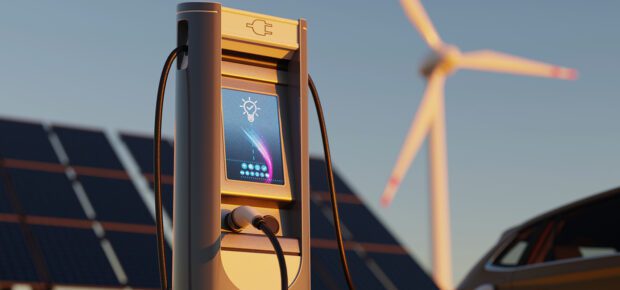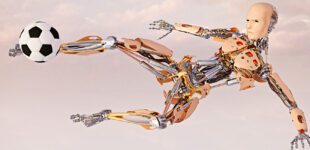January 25, 2024
Imagine a world where the hum of engines and the smell of exhaust are things of the past. That’s the future electric vehicles (EVs) promise us. As it stands, our roads contribute about 12% of global carbon emissions, but the rise of EVs is key to turning this around and making transportation cleaner and greener.
But, to accelerate EV adoption, the sector needs to leverage a new type of fuel altogether: data.
EVs are game-changers for infrastructure around the globe. With their growing numbers, they’re reshaping everything from city layouts to how we manage our electricity supply. The shift to EVs brings new challenges for our power grids and the need for innovative infrastructure to keep them running.
Here’s how data can help meet those challenges:
The Grid
The central challenge that data can solve boils down like this: Lots of people tend to charge their EVs at the same time, placing sizable strain on electricity grids. But there are also periods when few people are charging their cars, meaning there is excess capacity in the grid. Is there a way to shift EV owners’ behaviors so they charge during times of lower demand?
“Intelligent EV charging is becoming a big area,” said IEEE Senior Member Kyri Baker. “Charging EVs at high power rates can strain infrastructure like transformers, so smart scheduling of charging can help extend the lifespan of these components.”
By looking at how customers have used power in the past, it’s possible to make the distribution of electricity – especially for charging things – more efficient. By figuring out the busiest times and places for electricity use, the people running the power grid can spread out the power usage better. This way, they can avoid overloading the system, save on energy costs, and make the whole network run smoother.
Where Can You Charge?
Knowing how much battery power an EV has left is super useful, not just to individual drivers, but to all their fellow drivers on the road. That information, sometimes referred to as the vehicle’s state of charge, can tell an individual motorist how far they can go before they need to refuel. By collecting and analyzing state of charge data for many vehicles, a driver can know the best charging station to use to avoid a wait. And builders would also be able to use the data to understand the best place to build new charging stations.
“By analyzing the historical data of electric vehicle charging station use, like time of day, day of the week, seasonal variations, etc, it is possible to understand where the demand is high,” said IEEE Senior Member Marcio Andrey Teixeira. “The behavior of the data is another important factor because it provides insights like preferred charging times and popular routes. This information helps in the optimization of the placement of charging stations along frequently traveled routes.”
Learn more: Electric vehicles are here to stay, according to an editorial from IEEE Power & Energy Magazine. This means that the distribution grid and its stakeholders need to ensure that EVs and the grid work together. The Nov.-Dec. 2023 issue devotes numerous articles to the challenges of integrating EVs





 Meaningful Momentum or Running in Place?
Meaningful Momentum or Running in Place? AI Through Our Ages
AI Through Our Ages Liquid Infrastructure: Our Planet's Most Precious Resource
Liquid Infrastructure: Our Planet's Most Precious Resource The Impact of Technology in 2025
The Impact of Technology in 2025 Quantum and AI: Safeguards or Threats to Cybersecurity?
Quantum and AI: Safeguards or Threats to Cybersecurity? Why AI Can't Live Without Us
Why AI Can't Live Without Us Bits, Bytes, Buildings and Bridges: Digital-Driven Infrastructure
Bits, Bytes, Buildings and Bridges: Digital-Driven Infrastructure Impact of Technology in 2024
Impact of Technology in 2024 Emerging AI Cybersecurity Challenges and Solutions
Emerging AI Cybersecurity Challenges and Solutions The Skies are Unlimited
The Skies are Unlimited Smart Cities 2030: How Tech is Reshaping Urbanscapes
Smart Cities 2030: How Tech is Reshaping Urbanscapes Impact of Technology 2023
Impact of Technology 2023 Cybersecurity for Life-Changing Innovations
Cybersecurity for Life-Changing Innovations Smarter Wearables Healthier Life
Smarter Wearables Healthier Life Infrastructure In Motion
Infrastructure In Motion The Impact of Tech in 2022 and Beyond
The Impact of Tech in 2022 and Beyond Cybersecurity, Technology and Protecting Our World
Cybersecurity, Technology and Protecting Our World How Technology Helps us Understand Our Health and Wellness
How Technology Helps us Understand Our Health and Wellness The Resilience of Humanity
The Resilience of Humanity Harnessing and Sustaining our Natural Resources
Harnessing and Sustaining our Natural Resources Creating Healthy Spaces Through Technology
Creating Healthy Spaces Through Technology Exceptional Infrastructure Challenges, Technology and Humanity
Exceptional Infrastructure Challenges, Technology and Humanity The Global Impact of IEEE's 802 Standards
The Global Impact of IEEE's 802 Standards Scenes of our Cyber Lives: The Security Threats and Technology Solutions Protecting Us
Scenes of our Cyber Lives: The Security Threats and Technology Solutions Protecting Us How Millennial Parents are Embracing Health and Wellness Technologies for Their Generation Alpha Kids
How Millennial Parents are Embracing Health and Wellness Technologies for Their Generation Alpha Kids Space Exploration, Technology and Our Lives
Space Exploration, Technology and Our Lives Global Innovation and the Environment
Global Innovation and the Environment How Technology, Privacy and Security are Changing Each Other (And Us)
How Technology, Privacy and Security are Changing Each Other (And Us) Find us in booth 31506, LVCC South Hall 3 and experience the Technology Moon Walk
Find us in booth 31506, LVCC South Hall 3 and experience the Technology Moon Walk Virtual and Mixed Reality
Virtual and Mixed Reality How Robots are Improving our Health
How Robots are Improving our Health IEEE Experts and the Robots They are Teaching
IEEE Experts and the Robots They are Teaching See how millennial parents around the world see AI impacting the lives of their tech-infused offspring
See how millennial parents around the world see AI impacting the lives of their tech-infused offspring Take the journey from farm to table and learn how IoT will help us reach the rising demand for food production
Take the journey from farm to table and learn how IoT will help us reach the rising demand for food production Watch technical experts discuss the latest cyber threats
Watch technical experts discuss the latest cyber threats Explore how researchers, teachers, explorers, healthcare and medical professionals use immersive technologies
Explore how researchers, teachers, explorers, healthcare and medical professionals use immersive technologies Follow the timeline to see how Generation AI will be impacted by technology
Follow the timeline to see how Generation AI will be impacted by technology Learn how your IoT data can be used by experiencing a day in a connected life
Learn how your IoT data can be used by experiencing a day in a connected life Listen to technical experts discuss the biggest security threats today
Listen to technical experts discuss the biggest security threats today See how tech has influenced and evolved with the Games
See how tech has influenced and evolved with the Games Enter our virtual home to explore the IoT (Internet of Things) technologies
Enter our virtual home to explore the IoT (Internet of Things) technologies Explore an interactive map showcasing exciting innovations in robotics
Explore an interactive map showcasing exciting innovations in robotics Interactively explore A.I. in recent Hollywood movies
Interactively explore A.I. in recent Hollywood movies Get immersed in technologies that will improve patients' lives
Get immersed in technologies that will improve patients' lives